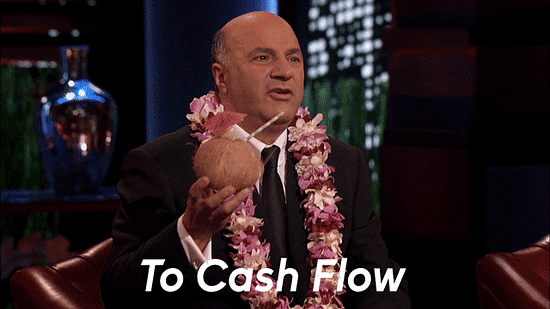The week ahead 01/10/2022
Shrinking the $8.76 Trillion Portfolio
Federal Reserve officials signaled greater discomfort with high inflation at their meeting last month.
Volatility
The Federal Open Markets Committee (FOMC) meeting minutes were released yesterday, quickly sending the markets down. For clarity, the FOMC holds eight meetings each year to discuss interest rate policy, asset purchases, and general economic conditions. I wrote a breakdown after the December Fed meeting, toward the end of this Week in Review post.
What we’re talking about here are the “meeting minutes” — which is the later-released, detailed record of the most recent meeting.
The meeting minutes showed officials believe that rising inflation and a very tight labor market could call for lifting short-term rates “sooner or at a faster pace than participants had earlier anticipated.”
Some officials also think that the Fed should start shrinking its $8.76 trillion portfolio of bonds and other assets relatively soon after beginning to raise rates, the minutes said.
Investors see the move as another way for the Fed to tighten financial conditions and cool the economy.
Despite investors having anticipated this move for months now, they still quickly acted by aggressively selling their stocks — sending the DJIA down -1% and the NASDAQ down -3%.
We’ve since seen some relief in the markets today — but, it’s a fool’s errand to try and time or predict exactly how these macroeconomic changes will impact the markets in real time.
If you’re reading this post and have absolutely no idea what I’m talking about — you’re not alone. This is some very hard-to-understand stuff. Our friends at the Wall Street Journal did a great job explaining everything in this 5-minute video — I highly recommend watching it.
As you saw in the video linked above, Jerome Powell did what he said he was going to do. He deployed every tool at his disposal to ensure the markets (and the greater US economy) wouldn’t stay collapsed as COVID-19 rampaged through our lives.
Now it’s time to “go back to normal,” which has investors frightened.
What to Keep in Mind
Despite tapering and rising interest rates making everyone run in circles panicking about their stocks — the unemployment rate is at pre-pandemic levels, we just added +807,000 private jobs in December, and the Omicron variant isn’t as deadly as we feared.
Our underlying economy seems to be strong and continually moving in the right direction and — despite the Fed’s intentions to taper bond purchasing — the true culprits driving inflation higher are an unforgiving supply chain, a rapidly-changing labor market, and printing infinity dollars over the last 18 months.
So here’s how I plan to approach this entire thing — rationally.
The price of a stock directly correlates with the total “value” of the company — market capitalization, or in some cases “enterprise value” if you want to go by that metric instead.
The total “value” of a company is directly correlated with the total amount of free cash flow the company is able to produce for its investors from its inception to its “death.” As investors, we try to determine the “total amount of free cash flow” (discounted back to present day value).
I know this may sound complicated, but the general idea certainly isn’t. Below is a YouTube video of Warren Buffet explaining what I’m telling you in a more digestible manner. I linked this out in a recent portfolio update to paid subscribers, but wanted to share it once more. The video should automatically skip to the question asked to him about free cash flow, but if it doesn’t — skip to 7:01 and listen carefully.
My goal as an investor is to identify companies that are trading beneath their intrinsic value, in relation to the free cash flow that company will produce for shareholders throughout its lifetime.
Fast Forward 5+ Years
Fact: a company’s stock price is directly correlated with the company’s ability to increase their free cash flow per share going forward.
For those of you who are visual learners — the purple line is Facebook’s (FB) free cash flow per share, the orange line is their stock price.
For those of you who learn by reading intricate examples, below is a quote by Jeff Bezos that I’ve shared once before. It’s from Amazon’s 2004 Letter to Shareholders and is quite powerful.
“Our ultimate financial measure, and the one we most want to drive over the long-term, is free cash flow per share.
Why not focus first and foremost, as many do, on earnings, earnings per share or earnings growth? The simple answer is that earnings don’t directly translate into cash flows, and shares are worth only the present value of their future cash flows, not the present value of their future earnings.
Future earnings are a component—but not the only important component—of future cash flow per share. Working capital and capital expenditures are also important, as is future share dilution.
Though some may find it counterintuitive, a company can actually impair shareholder value in certain circumstances by growing earnings. This happens when the capital investments required for growth exceed the present value of the cash flow derived from those investments.
Amazon.com’s free cash flow is driven primarily by increasing operating profit dollars and efficiently managing both working capital and capital expenditures. We work to increase operating profit by focusing on improving all aspects of the customer experience to grow sales and by maintaining a lean cost structure.
As to dilution, total shares outstanding plus stock-based awards are essentially unchanged at the end of 2004 compared with 2003, and are down 1% over the last three years.
During that same period, we’ve also eliminated over six million shares of potential future dilution by repaying more than $600 million of convertible debt that was due in 2009 and 2010. Efficiently managing share count means more cash flow per share and more long-term value for owners.
This focus on free cash flow isn’t new for Amazon.com. We made it clear in our 1997 letter to shareholders—our first as a public company—that when “forced to choose between optimizing GAAP accounting and maximizing the present value of future cash flows, we’ll take the cash flows.”
Regardless as to the type of “learner” you are, the material to be taught is the same — free cash flow per share should be every company’s north star.
To quote my 2022 Portfolio: Mid Caps post the other week, FCF per share is the root cause of my investment thesis in each company. Here’s a blurb on Airbnb (ABNB) from the post..
Airbnb (ABNB):
Airbnb has done an incredible job of bringing “network effects” to life. By this, I mean the company of Airbnb becomes more valuable as more participants enter into their network. More people looking to stay overnight somewhere; more people signing up to host them.
The company will likely do +20-30% revenue growth compounded annually through the decade. They’re already FCF positive, with 2021 being the year that figure first entered the black. $650 million in FCF this year, $1.6 billion in 2022, $2.1 billion in 2023, etc.
With a 21% FCF margin, Airbnb would land around $3.6 billion in free cash flow in 2026. This gives us ~$10.35 in FCF per share, or with a 35X multiple, a share price of ~$360 / share by end of year 2026.
Considering the stock is trading at $171 right now, this leaves +110% upside, or 16% returns compounded annually through 2026 — better than the historical 8-10% returns we can expect from simply “investing in the stock market.”
I encourage all of you to “fast forward” your thinking toward either when a company will become FCF positive (as Airbnb did in 2021), or to how FCF positive the company will be in 5+ years.
By doing this, we’re able to better estimate where their stock price could realistically be trading — giving ourselves some comfort when seeing it slip as investors panic about interest rates and tapering.
For some companies, like Analog Devices (ADI) below, it’s easy to imagine this 5+ year timeline and build a risk-adjusted position around the assumptions made.
Analog Devices (ADI):
Analog Devices is rocking and rolling within this semiconductor secular growth trend — with over 75K products being sold to 125K customers around the world. For the year, the company has done $7.3 billion in revenue, with 71% of that revenue recognized as gross profit.
They’re an absolute cash flow machine, having spit out $2.1 billion in FCF during their fiscal 2021. The company is running a 29% FCF margin (expansion imminent) and, with moderate revenue growth through 2026, we can expect that figure to hit ~$5.2 billion during FY26.
That’ll net us ~$9.90 in FCF per share, or with a 35X multiple, a share price of ~$346 / share by end of year 2026.
The stock is hovering around $172 / share right now, this leaves +102% upside, or 15% returns compounded annually through 2026 — better than the historical 8-10% returns we can expect from simply “investing in the stock market.”
Others, like Affirm (AFRM), aren’t yet FCF positive. For these companies, predicting when FCF might happen and just how FCF positive they’ll become is much more difficult. Therefore, they experience the most volatility in the stock market because investors are continually attempting to size-up their intrinsic value.
Control the Controllables
Trying to predict what the Fed will do and how their tapering efforts will impact stock prices down to the dollar is simply going to drive you crazy and turn you off from investing. Instead, I’ll be spending my time identifying secular growth trends to invest toward — allowing companies operating within them to continually grow their revenues and FCFs.
For example — here’s a piece on Seeking Alpha’s website detailing a report by Wedbush, claiming cybersecurity companies will see “massive strength” in 2022.
Sounds like I’ll be continually adding to my Palo Alto Networks (PANW) and Fortinet (FTNT) positions throughout the year.
Or maybe this piece by Bank of America claiming that 2022 is “5G’s Year” — pair 5G infrastructure adoption with rising real estate prices and the American Tower REIT (AMT) sounds like something worth learning more about.
Stay the course, control the controllables, and make strategic “bets” on big winners when appropriate.
If you’re looking for more information about FCF per share — read this.
If you’re looking for a detailed breakdown of how I’m building my wealth in my 20s — read this.
If you’re looking for a place to park cash while the market does its thing — try Celsius or BlockFi, each offer 8.5% to 9.5% APY on your cash (stable coins).
Disclaimer: This is not financial advice or recommendation for any investment. The content is for informational purposes only, you should not construe any such information or other material as legal, tax, investment, financial, or other advice.




